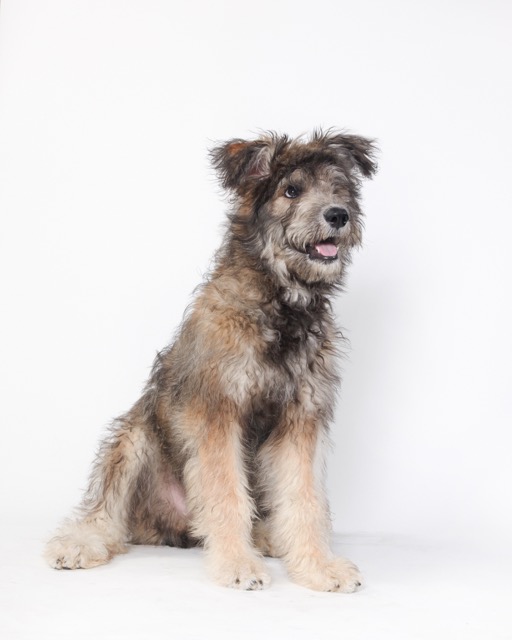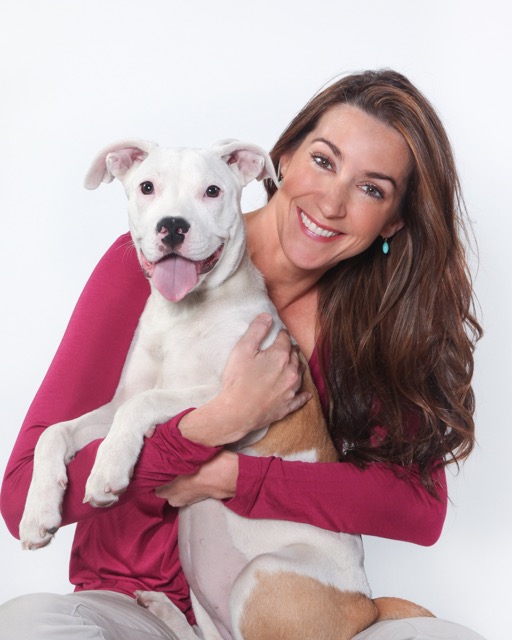
Overcoming a Fear of Dogs
So many of us consider dogs to be one of our best friends we could hope for. They bring endless joy and fun into our lives in so many ways. Moments of exuberant play are balanced with the calm of your dog resting his or her head on your lap, assuring you that there is no place your dog would rather be than with you. No wonder thirty-nine percent of U.S. households share their lives with at least one dog and there are approximately 77.5 million canine companions in the United States, according to the 2009-2010 American Pet Products Association National Pet Owner Survey.
Understanding Cynophobia
Yet, for as grateful as so many of us are for the mutually rewarding relationship we have with our dogs, there are many who suffer from an extreme fear of dogs, which is called cynophobia and is often caused by a traumatic encounter with a dog or because of a lack of early, positive exposure to them. For those suffering from cynophobia, the mere sight of a dog at a distance, or even the prospect of it, can cause serious distress. This kind of fear can be powerful and have an intensely negative effect on a person’s overall quality of life for the simple fact that there are so many dogs out there and therefore so many opportunities for encounters with them.
Phobias can be maintained and escalate by the internal triggers a person falls back on, such as believing the encounter will result in an attack and repeating to oneself how terrifying the situation may be. Essentially, practicing the fear response pattern creates a stronger, more deeply ingrained habit with each repetition. This sort of conditioning, even if made inadvertently, creates a deeply ingrained pattern of emotion and response. The response to this pattern may escalate and evolve into shaking, crying and running away.
[post_link link=”https://andreaarden.wpengine.com/dog-training/the-honeymoon-period-with-a-your-new-dog/”]
Unfortunately, this response may actually encourage a dog to investigate and even chase the person. Which, of course, will further cement and probably escalate the phobia. Running away from a dog may trigger the dog’s predatory response. So, as difficult as it may be, it is usually advisable to try to remain still, to avoid eye contact, and then to move slowly away.
A Case Study: Kathy’s Journey
When the team and I on Animal Planet’s Underdog to Wonderdog were contacted by Kathy who was suffering from cynophobia, we knew we had a daunting challenge. But, it sounded like one of the most important ingredients for the recipe for success was on our side. Kathy was truly committed to facing and overcoming her phobia.
Kathy’s mission to overcome her fear was driven by a number of factors; To relieve the stress it was causing herinternally, but also because she felt that her fear was having a negative impact on her family. Her husband and children do not suffer from a fear of dogs. In fact, all three of them desperately wanted a dog as part of their family. For years, Kathy had been trying to hide her fear from her children by telling them she was allergic to dogs. But, as her children were maturing, Kathy realized the truth was coming to the surface. Her children started realizing that there mother was terrified when she saw a dog and Kathy was regretting not telling them the full truth. She was dedicated to overcoming this problem for herself and her family.
Initial Assessment and Exposure Therapy
We started by taking some time to assess how severe Kathy’s fear was. A walk in the park where we passed dogs lying quietly by their people and walking politely on leash at a distance caused Kathy to grab onto my arm for security. It was heartbreaking to see her shake and well up with tears knowing that this was something she experienced on a regular basis. We passed a dog run, and took a moment to watch the dogs play in the safely fenced in area. For dog lovers, most of the normal and natural behavior of dogs is part of why we hold them so dear. But, for others, like Kathy, the natural behavior of dogs was overwhelmingly frightenting. Kathy panicked when the dogs ran around romping and playing with each other. When one barked to solicit play from another, it was clear it was time for us to head back to headquarters at
During our walk, Kathy had mentioned to me that one type of dog she thought she wouldn’t be afraid of was a tiny puppy. So, I decided to arrange some time for Kathy to bond with a little pup as a starting point for our work together. I introduced her to a 6 week-old puppy of about 3 pounds. When I walked into the lounge area Kathy seemed very tense. So, I sat on the couch and allowed her to take her time to approach. Even after seeing how severe her fear was on our walk, I was a little surprised to see her reaction to this sleepy, tiny canine whom she had told me she thought she would feel comfortable with. Kathy not only didn’t want to touch the pup, nor sit near him, she ran out of the room crying. I was heartbroken for Kathy seeing how difficult facing this fear was for her and for realizing how tough the road ahead would be as we worked together to overcome it.
Professional Support and Positive Reinforcement
Kathy and I chatted for a bit. In addition to being afraid, she was ashamed of her reaction. I assured her that she had nothing to be embarrassed about. In fact, quite the opposite. She should be proud of herself for what she was trying to do. We all have fears, but not all of us choose to take steps to overcome those which have a negative impact on our lives. Kathy mustered the courage to come back into the lounge and after talking about the age of the pup and the fact that he was so young that in reality it was impossible for him to pose any physical threat to anyone, Kathy reached out to tentatively touch him. It was the first time she had ever touched a puppy.
This was a wonderful first step for Kathy. But, after our day together I got the team together to discuss the possibility of enlisting the help of a therapist to work with Kathy as well. In our first meeting with her she explained to Kathy how common phobias are, especially cynophobia. She said that in addition to repetitive exposure to friendly, well-mannered dogs, Kathy should choose a mantra to focus on during these encounters. This way, she could focus on what she would hopefully feel automatically in the future (that she is safe) when encountering dogs rather than practicing her internal monologue about how scared she was and how potentially dangerous the situation was. She also suggested some ways for Kathy to calm herself physically. Deep breathing and relaxing her shoulders were part of the plan. This would hopefully help to relieve Kathy’s sense of tightness in her chest, her heart pounding and her shaking.
Continued Progress and Confidence Building
Kathy and I continued to work on exposure to other dogs and on her developing a better understanding of general dog body language and behavior. I felt that this would help to relieve her feeling that dogs were so foreign to her and that everything they do (even a soft tail wag) is a potential threat. Part of this process involved a visit to a dog training school with my dog Nora. It was amazing enough that Kathy was able to enter the facility. Especially after she saw there were a number of dogs inside when we arrived. She was so focused on keeping her eye on those dogs, that she seemed to barely recognize that she was standing right next to my dog. It was the closest encounter she had with an adult dog since we started working together. When Kathy felt ready, we stepped into the enclosed training area. We talked through her mantra, did some deep breathing exercises and then I asked Kathy if she could hold Nora’s leash. I thought this would be a good moment to hand over the reins to her because she seemed so focused on her mission to remain calm. And it worked! Kathy not only held Nora’s leash, but progressed to participating with her in the class.
A Successful Transformation
After this wonderful day together, we all felt much more confident that Kathy would be able to overcome her fear and know the joy of having a dog as part of her family. So, we thought it was time for her to meet her new dog Bo who we had been working with to teach him to respond promptly when asked to sit. We thought this simple behavior would be a wonderful starting point for Kathy to feel confident that she could effectively communicate with Bo. It was a wonderful moment seeing Kathy’s face as she entered the room and saw Bo for the first time. She seemed calm and proud that this little guy was her family’s new dog. Kathy touched Bo, hugged him, asked him to sit and with the help of Ali McLennan even learned some valuable tips for grooming Bo in the future.
One of our next steps with Kathy was a big one…Ali and I took her and Bo to a pet parade where she would walk Bo herself and be exposed to other dogs. It was a beautiful day on the pier, with loads of dogs in adorable outfits. Kathy was all smiles as she walked Bo down the red carpet as they competed for ‘Best in Show’ at the event. They didn’t win the official prize, but the three of us knew that Kathy had won something much more valuable.
When we brought Bo to live with his new family, we all felt it would be the icing on the cake if Kathy was the one to introduce him to her family. The joy and surprise on their faces to see their new, handsome pup escorted by his new Mom as he walked up the drive to his new home was an amazing reward for us all. Most especially Kathy.
If you know someone who is seeking assistance with their fear of dogs, consider reaching out to a local health professional for guidance and possible individualized or group sessions.
Educate your dog with Andrea Arden and her team.
New York | Los Angeles | Connecticut
Share
- Group Classes
- Private Lessons
- Virtual Training
- Puppy Play Groups
- Puppy Training
- Articles & Advice




